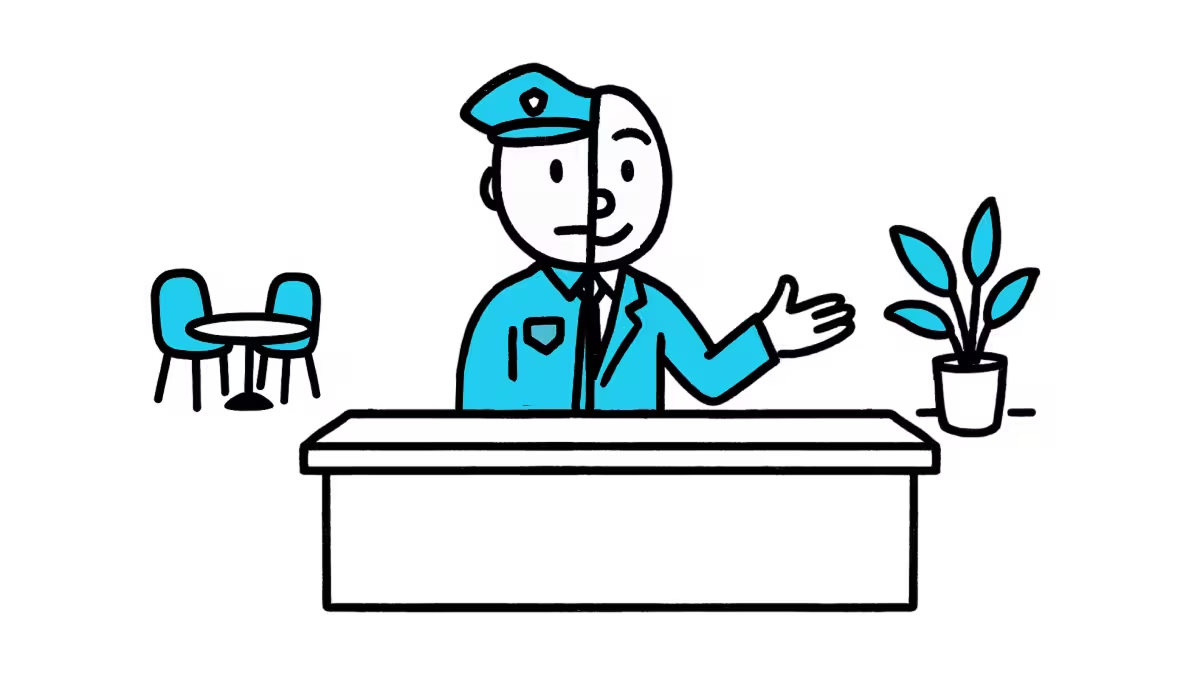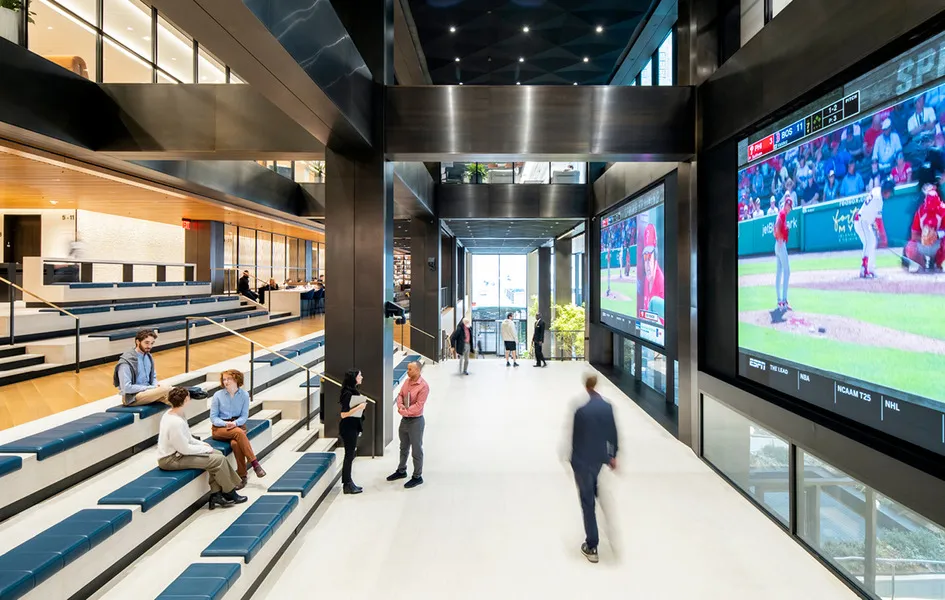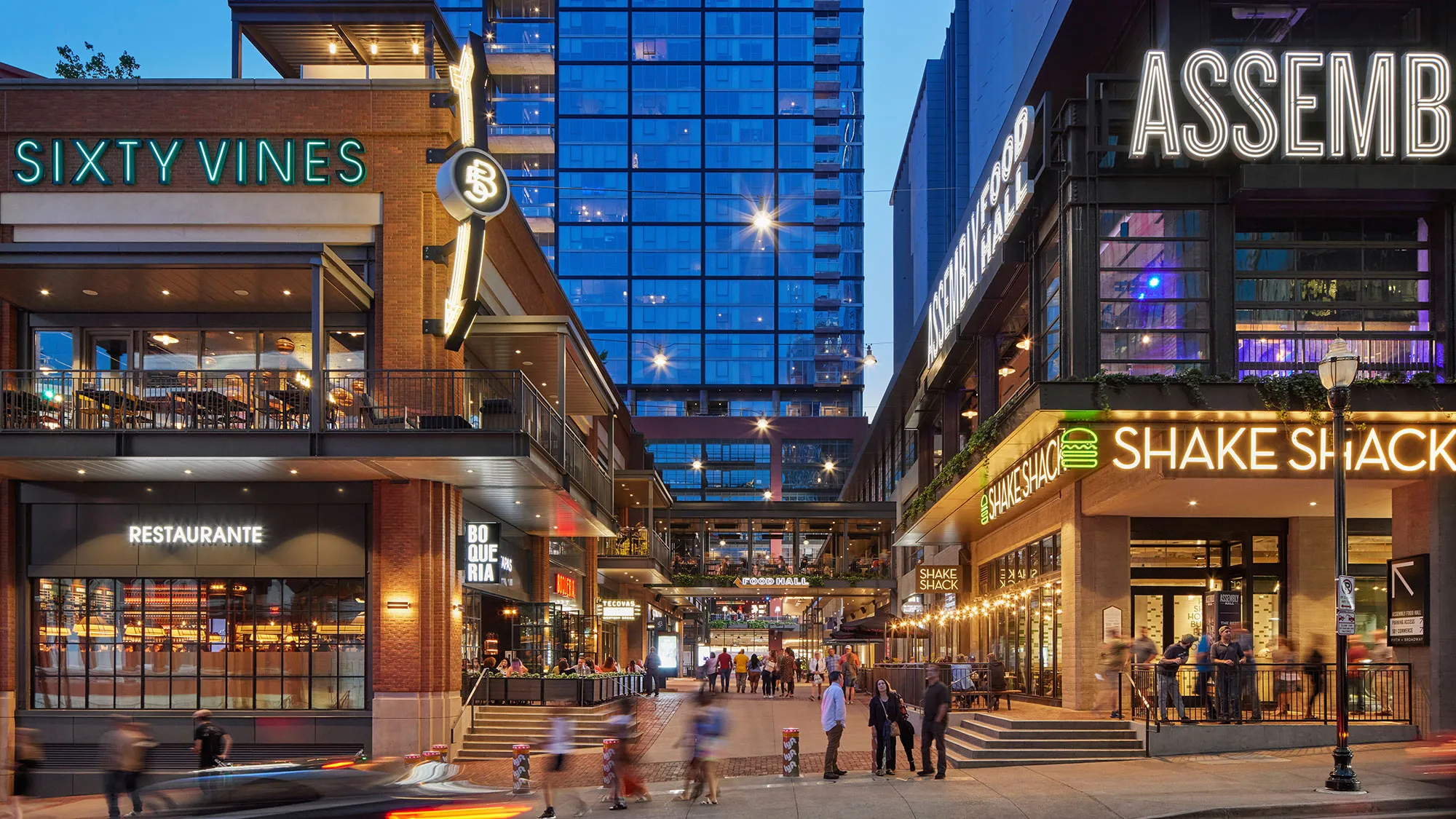Welcome Security

"Excuse me, sir, but they don't want you to put your feet on those chairs. I'm sorry, but it's not me. It's them."
Two weeks ago, this sentence from a security guard outside a Manhattan office building sparked my curiosity about workplace hospitality boundaries. After the tragic deaths of NYPD Officer Didarul Islam and security guard Aland Etienne at 345 Park Avenue—along with real estate professionals Wesley LePatner and Julia Hyman—I see that interaction through an entirely different lens.
The guard who said "it's them" wasn't just navigating workplace politics—he was managing the impossible dual mandate of modern security work: stay vigilant for genuine threats while creating welcoming environments. In complex, mixed-use spaces where the rules aren't always obvious, we're asking security professionals to be both enforcers and explainers of policies that visitors can't intuitively understand.
My friend Tony Vargas wrote poignantly in the aftermath:
Sending heartfelt recognition to the office-building security teams, door and lobby attendants, workplace and office managers, reception staff, and all others who serve as the gatekeepers and protectors of our work environments. Your presence plays a vital role in keeping our workplaces safe, often in ways that go unseen.
Officer Islam and Mr. Etienne embodied this courage.
As the city and real estate industry respond to this tragedy, the temptation will be to lock down every building. But turning offices into airports won't solve the deeper challenge—it will only drive people away from spaces we're desperately trying to make magnetic.
Lead Across the Lines of Modern Work with Phil Kirschner
Over 22,000 professionals follow my insights on LinkedIn.
Join them and get my best advice straight to your inbox.
The Dual Mandate
Modern security professionals (mostly from outsourced security services firms) operate under contradictory expectations that would challenge anyone. They must simultaneously:
- Detect threats while maintaining an approachable demeanor
- Enforce policies while delivering hospitality-level service
- Stay hyper-vigilant while appearing relaxed and welcoming
- Make split-second decisions while considering brand reputation
The building where my original interaction occurred (Penn 1) exemplifies this challenge. It's an "office of the future" with hospitality-forward lobby, restaurant, coffee shop, and public spaces that blur inside and outside.

By contrast, 345 Park Ave has no public-facing amenities and a best-in-class security program.
The more complex and mixed-use our environments become, the less we can assume visitors intuitively understand the rules. Security guards become the explainers of invisible boundaries—a burden that could be reduced through clearer signage and intuitive design.
At the same time, some offices in NYC have legendarily cumbersome security protocols. If the industry's response to tragedy is to implement equally draconian measures everywhere, we'll solve the safety challenge by creating spaces to which nobody wants to commute.
My Own Learning Curve
I'll be honest: my initial reaction was to critique the guard's approach. I saw a hospitality gap to fix—or at least a question without a clear answer.
But reflecting on the shooting has forced me to examine my assumptions about what we should expect from security professionals.
This mirrors the complexity HR professionals face with the common perception that "HR is not your friend." They're trying to improve employee experience while their primary function remains protecting the organization from legal and financial risks.

Security faces a similarly impossible balance, but with physical safety too.
The workplace industry needs to have a more nuanced conversation about when and how hospitality crosses the building perimeter. We need clarity about whether security guards should be enforcers, workplace ambassadors, or a hybrid role that is neither.
Do we want security teams trained in de-escalation and threat assessment, or in customer service and brand experience? The honest answer is probably both, but we haven't figured out how to measure success when those objectives sometimes conflict.
Beyond the Lobby
The permeable boundaries I've written about—blurring corporate and community—create new security challenges that traditional models don't address. Add mixed-use developments to the equation, and the threat landscape gets exponentially more complex.
Offices, restaurants, retail, hotels, and residential units could be combined into the same structure. A guard might encounter executives, tourists, residents, and delivery drivers within the same hour. Each group has different expectations for how they should be treated, but the security professional has seconds to make those distinctions.

When your lobby is designed to feel like a hotel but operates in a world where office buildings could be targeted, the expectations placed on front-line workers become almost impossibly complex. We're asking them to be simultaneously welcoming and wary, helpful and vigilant.
Building Better Support Systems
The most successful organizations will recognize that security teams need different support than other customer-facing roles:
Define the Lines: Stop assuming security professionals intuitively know when to prioritize safety versus service. Create clear guidelines about what hospitality looks like within security constraints.
Invest in Integrated Training: Security professionals need de-escalation techniques, threat assessment skills, AND interpersonal effectiveness. But service training must account for security realities, not ignore them.
Create Appropriate Metrics: We need performance measures that acknowledge the dual nature of modern security work—response time to genuine concerns alongside guest satisfaction, incident prevention rates with brand experience feedback.
Cross-Functional Accountability: Real estate teams must partner with security vendors to define hospitality boundaries. HR leaders should recognize that employee experience extends to contracted workers. Someone needs end-to-end accountability for how security integrates with workplace experience—the "Chief of Work" becomes essential when life-and-death responsibilities intersect with brand delivery.
Not sure how to start? Forward this email to engage a colleague.
Honoring the Balance
The future of workplace experience isn't about making security guards more hospitable; it's about creating environments where they can be both effective protectors and ambassadors without compromising either role.
Officer Didarul Islam and Aland Etienne died protecting the very environments we want to feel welcoming. The guard who said "it's them" was trying to maintain that delicate balance in his own way.
The least we can do is build systems that honor both the complexity of their work and the courage it requires.
Leading organizations must recognize security professionals as both protectors and experience creators—and invest in support that enables both roles without turning every building into an airport.
- Phil

Lead Across the Lines of Modern Work with Phil Kirschner
Over 22,000 professionals follow my insights on LinkedIn.
Join them and get my best advice straight to your inbox.


